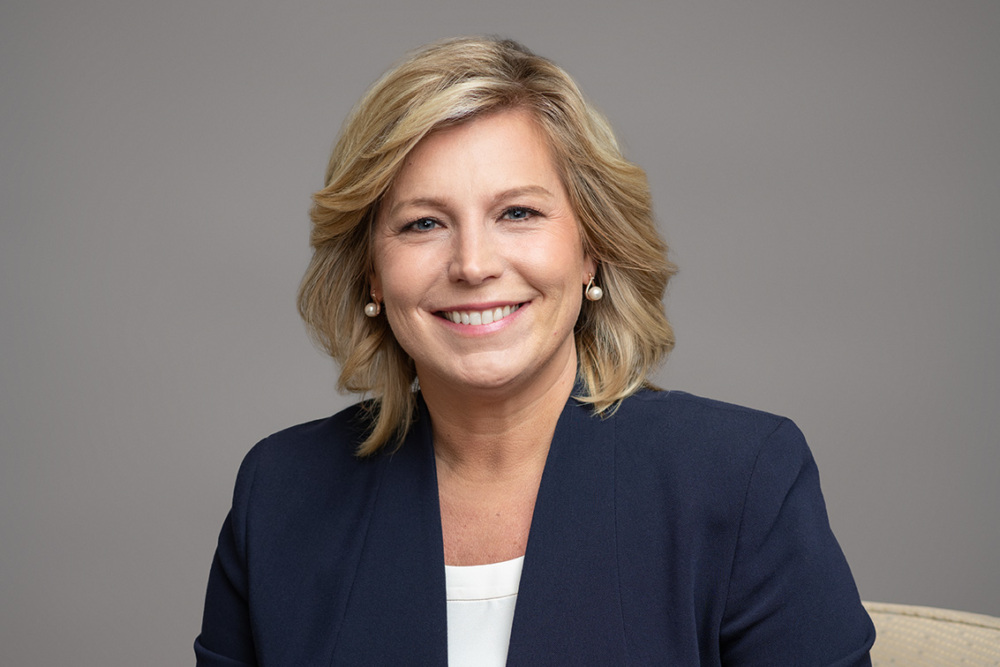How the Older Americans Act supports healthy aging and cancer prevention

It’s Healthy Aging Month—a time to celebrate the positive aspects of growing older and the importance of embracing healthy behaviors as we age.
Lifestyle, however, is just one piece of the puzzle. Healthy aging also depends on a nationwide framework of services that help older people stay active, independent and financially secure. At the core of these services is the Older Americans Act (OAA), the primary federal law that supplies their funding.
The OAA has been updated several times through the “reauthorization” process, with another due this year. Yet funding has lagged behind inflation and population growth for years. With a record 11,200 Americans turning 65 every day,1 it’s time for our congressional leaders to strengthen and revitalize this powerful law.
How does the OAA help older Americans?
The OAA ensures organizations can plan for and implement programming to help older adults, especially the most vulnerable, age well. These are its key provisions:
- Health and disease prevention programs: Evidence-based chronic disease self-management education programs (CDSME) are proven to help older adults improve both their psychological and physical health. This is vitally important considering the financial harms of chronic diseases disproportionately impact women and people of color. (In 2022, 39% of Black and Hispanic older adults lost wages due to chronic disease compared to 17% of white older adults; and of those who lost wages due to chronic disease, 56% were women.2) The OAA provides for evidence-based CDSME programs that help people manage سرطان, diabetes, and other conditions and reduce their reliance on costly medical care.3
- Nutrition support: Today, roughly 12 million older adults experience (or are threatened by) hunger.4 OAA provides for both home-delivered and congregate meals for adults age 60+, helping to reduce food insecurity and malnutrition and enhance social connections.
- Senior center modernization: The OAA authorizes funding for the modernization of multipurpose senior centers, which work to keep older adults active, independent and healthy. These centers also provide social support that’s essential to mental health and may also help improve cognition.5
- Workforce training: As of June 2024, 1.1 million people ages 55 and older were unemployed.6 OAA funds the Senior Community Service Employment Program (SCSEP), the only federal program providing job training and placement for low-income workers ages 55 and older.
- Support for the direct care workforce: The OAA provides for a national technical assistance center that helps organizations recruit and retain direct care workers. Today, nearly three-quarters of service providers are turning away business, and national turnover rates average nearly 44%.7 This shortage prevents many older adults from getting the hands-on care and personal assistance they need, leaving no option but to move to expensive residential facilities.
What is the current status of the Older Americans Act?
Back in March, I testified before the U.S. Senate Committee on Health, Education, Labor & Pensions (HELP) about the need for additional investment in OAA programs. In July, the HELP Committee approved a reauthorization bill that was endorsed by the National Council on Aging (NCOA).
But our work is not done yet. If we want Congress to pass this bill before the year’s end, we must educate them on the significance of its provisions. NCOA will continue to mobilize a strong advocacy effort to secure the necessary legislative support. You can help by reaching out to your members of Congress urging them to approve this vital funding.
Using our collective voices, we can shape a future where everyone has the ability to age with dignity and peace of mind. The stakes are higher than ever before.

Sources
- Jason J. Fichtner, PhD. The Peak 65 Zone is Here – Creating a New Framework for America’s Retirement Security. Retirement Income Institute, Alliance for Lifetime Income. Found on the internet at https://www.protectedincome.org/wp-content/uploads/2024/01/Whitepaper_Fichtner.pdf
- National Council on Aging. The Inequities in the Cost of Chronic Disease: Why It Matters for Older Adults. Found on the internet at https://www.ncoa.org/article/the-inequities-in-the-cost-of-chronic-disease-why-it-matters-for-older-adults
- U.S. Administration for Community Living (ACL). Justification of Estimates for Appropriations Committees – Fiscal Year 2025.
- Meals on Wheels. The Escalating Issue of Senior Hunger, 2024 National Snapshot. Found on the internet at https://www.mealsonwheelsamerica.org/docs/default-source/fact-sheets/2024/the_issue_2024_national_snapshot_fact_sheet.pdf?sfvrsn=c82d8c3b_20
- Katie Bohn. Socializing may improve older adults’ cognitive function in daily life. Pennsylvania State University. September 14, 2021. Found on the internet at https://www.psu.edu/news/research/story/socializing-may-improve-older-adults-cognitive-function-daily-life/
- Drystan Phillips. Hidden and Persistent Unemployment Among Older Workers. Schwartz Center for Economic Policy Analysis. December 20, 2023. Found on the internet at https://www.economicpolicyresearch.org/resource-library/hidden-and-persistent-unemployment-among-older-workers
- Ancor. The State of America’s Direct Support Workforce Crisis (2023). Found on the internet at https://www.ancor.org/wp-content/uploads/2023/12/2023-State-of-Americas-Direct-Support-Workforce-Crisis_Final.pdf